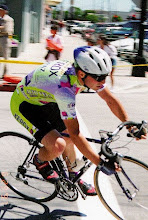Home: FT-857D + Ten Tec Hercules amplifier at 500W, G5RV inverted vee at 60 feet, 2 element wire yagi at 35 feet and fixed @70 degrees. Sea level.
At AD6Z: Elecraft K3 + Ameritron AL-1200 amplifier at 1500W, 80m dipole, 2 el 40m Yagi, 5 el 20m Yagi, 15m 5/5 el Yagi stack, 10m 5 el Yagi. At about 1700' elevation, decent downslope to US.
Major differences:
- Triple the power (+4-5 dB)
- Way better antennas (+9-15 dB)
- Better terrain (just guessing +5 dB)
*only counts runs of more than 10 QSOs. Runs less than 10 counts as S and P since that's all that N1MM will show.
@Home @AD6Z (callsign NW6H)
Time: 10:18 14:13
QSOs: 383 832
Sections: 77 79
Average Rate: 37/hr 58/hr (+57%)
Best 60 min: 52/hr 83/hr (+60%)
Best 10 min: 96/hr 108/hr (+13%)
Longest run: 50 QSOs 151 QSOs
Run/SP count*: 120/263 577/255
Run/SP ratio*: 0.46 2.27
Score: 58,982 131,456
There were 258 callsigns that I worked at both stations, meaning there were 125 stations I worked only at KM6I, and 574 that I worked only at AD6Z.
Another interesting thing to look at is the signal levels at the various Reverse Beacon Network CW Skimmers out there. Here's how my home signal compared with AD6Z's signal on 20m and 40m at the K4TD Skimmer site (at the time, Donald, AE6RF was operating AD6Z's station using the callsign K6WC). Click to zoom in on the charts.



No comments:
Post a Comment